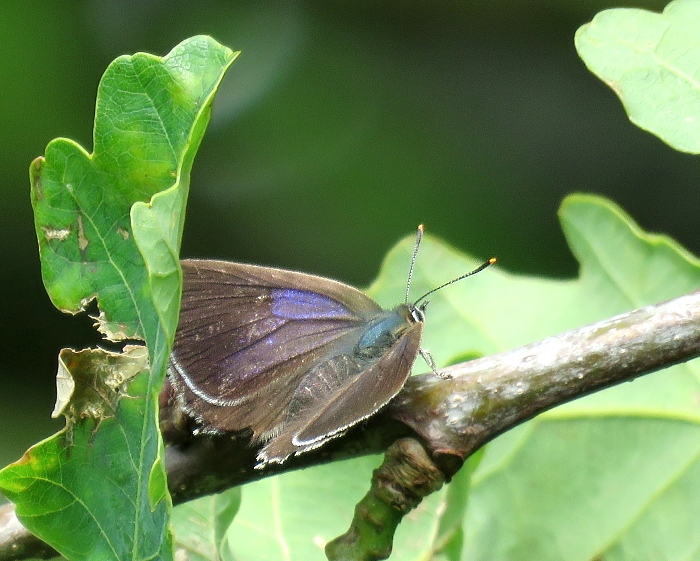
Male (I think), Switzerland, July 2018

Male, Switzerland, September 2013

Female, Suffolk, UK, July 2020

Male taking minerals, Switzerland, September 2013

Female, Suffolk, UK, July 2020

Female, Suffolk, UK, July 2020

Female, Switzerland, July 2009

Female, Switzerland, July 2010

Female, Switzerland, July 2010

Female, Switzerland, July 2009

Val d'Aran, July 2005

Subspecies
ibericus,
roosting
in the shade in the heat of the day, Andalucía, July 2017

Subspecies
ibericus,
Andalucía, July 2017

Subspecies
ibericus,
Andalucía, July 2017

Female, Suffolk, July 2008 (photo Mrs J. Padfield)

Female, Suffolk, UK, August 2005 (she is old and all the
purple is washed out)


Male, Suffolk, July 2002

Three eggs on an oak twig, Switzerland, January 2011

An egg on an oak sprig, Switzerland, January 2010

Two eggs on oak buds, Switzerland, January 2010

Egg, Switzerland, January 2010

Egg, Switzerland, January 2010

This is the commonest
woodland hairstreak
in Europe, being found pretty well everywhere there are oak trees. Just
one large oak is sufficient to sustain a colony. Despite this, it is
elusive and most often seen clustering in the tops of trees - often
ash, rather than oak - where it can flash silver as it catches the
evening or morning sun. Males do come down to take minerals on the
ground and females can be found laying eggs relatively low down too, so
photo opportunities do arise.
The
male has a purple sheen over
the whole of his wings but this is only visible from some angles and
soon lost as the butterfly gets worn. The female has purple only in the
cell and the wing bases. In most of Europe, the underside is a chalky
grey with a strong hairstreak, wavy submarginal ornamentation and two
orange spots on the hindwing, the upper with a black centred and the
lower with a black spot outside it. In Iberia south of the Pyrenees,
however, subspecies ibericus
flies. This subspecies is much more weakly marked beneath, some
individuals appearing almost entirely unmarked. The hairstreak is thin
and rather unclear, the submarginal ornamentation virtually
non-existent and the orange spots are vestigial or absent. In July 2017
I found this subspecies near Córdoba, sheltering on the foodplant in
the shade in the heat of a blazing Andalucían day.
The eggs are relatively easy
to find in
winter on or
near oak buds, though like the adults they seem to be much commoner in
some years than in others. The caterpillar develops quickly and
hibernates fully formed inside the egg, emerging when the buds loosen
in spring. It quickly burrows into one of these buds for his its first
meal. It continues to feed on the unfolding flowers, then moves to leaf
buds later in its development, hiding among the bracts. The butterflies
appear on the wing in July (sometimes June) and may be seen into the
autumn.























